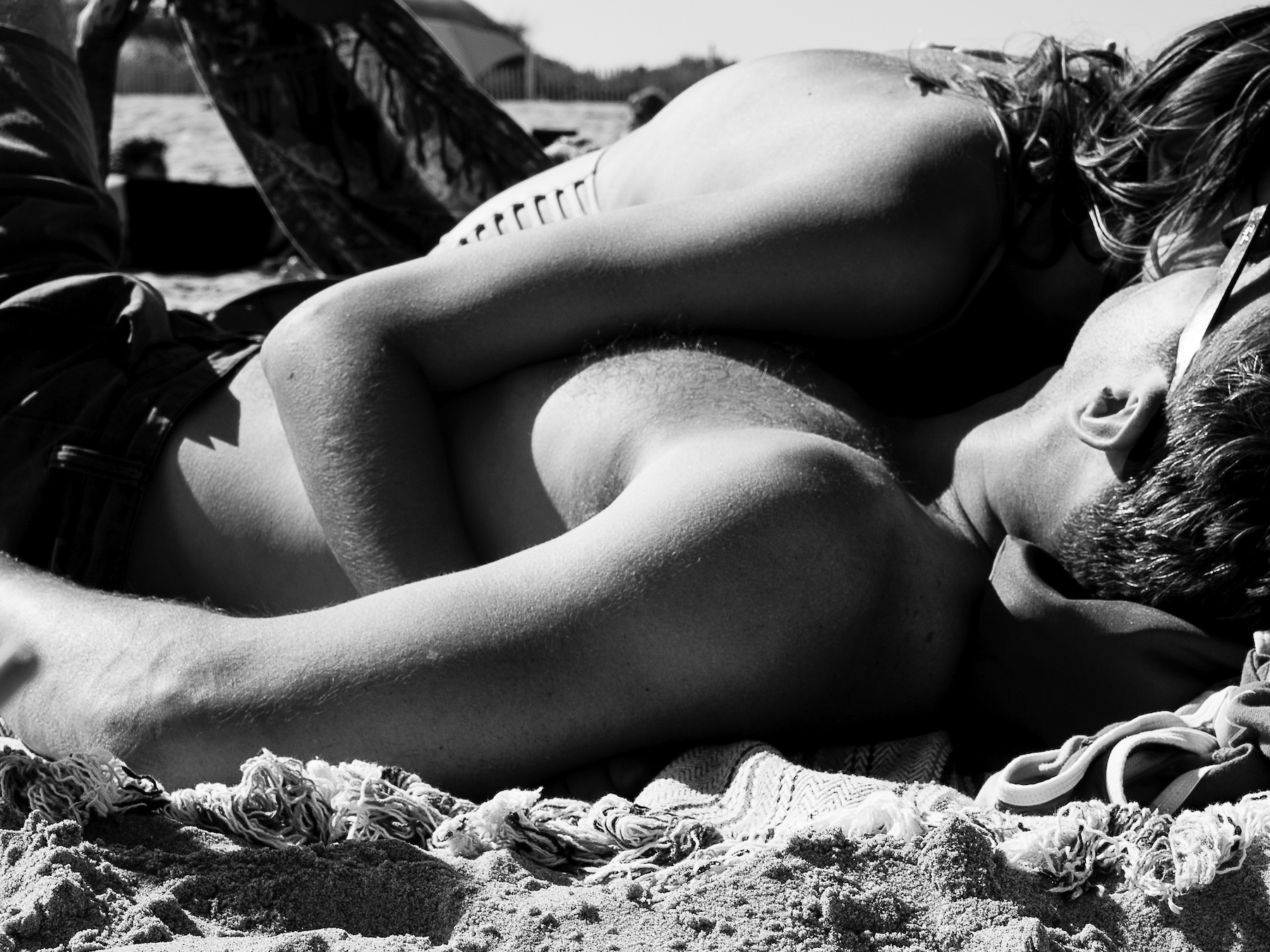As proximity and touch have become fraught in Covid times, photographer Erica Reade’s Beach Lovers series highlights both the thrill and the comfort of shared presence. Mixing sly street photography alertness with an oceanside setting, she hones in on considerate gestures and lived-in tenderness, or what she describes as “quiet togetherness”: shared towels, linked limbs, coiled kisses, outstretched arms, matching body language.
“It is all somehow rawer and more vulnerable on the beach,” she remarks in her artist statement on the final page of her new book, coming out June 1. “It can be easy to get jaded about love and humanity living in New York and this series gave me hope when I didn’t have any.”
Over coffee in Brooklyn, we chatted with Erica about shooting with discretion, glorious release at the water’s edge, and inventorying forms of affection.
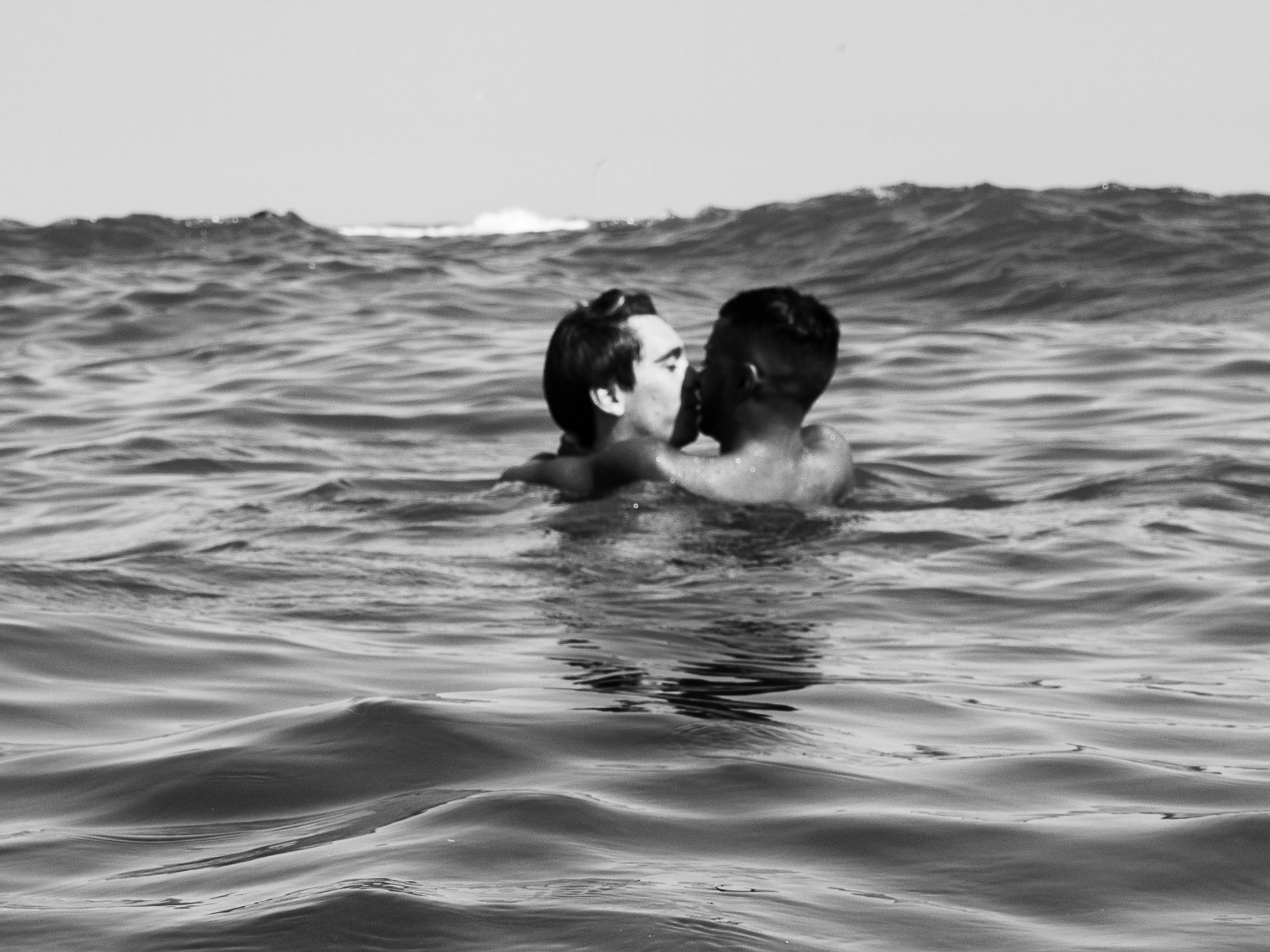
Let’s start with your very first photo. How did this unfold into a longstanding series?
It was at Fort Tilden, Memorial Day weekend 2015. Truly, I just happened to look up from my towel and see the way these two were entwined. I was like, Oh, that’s really sweet. I had an old 35 millimeter Canon camera; I took a photo and I was very nervous they were gonna see that I was doing that. But I got that little butterfly of excitement. I was like, Let me see if I can get other couples, to finish off this roll. When I got the film developed, a few weeks later, I was like, Okay, this is something. That became my goal for that summer: to keep photographing couples on the beach in black-and-white, and see what it turned into.
Photography, at the time, was more of a hobby for me. Once the series took root, I was like, I need to start investing in myself, in the work. I kept trying different cameras — the series is shot on film, digital and some even on my phone. By the end of the summer, I had a small but strong collection of photos, and I was finally excited about a body of work. Every summer since, between five and 10 photos were really, really strong. There are some 60 photos in the book. I think it’s a good representation of what I’ve been doing over the past few years.

“New Yorkers at the beach” is a theme photographed by Arlene Gottfried, Weegee and Bruce Gilden, amongst other photographers. Was this photographic history a point of reference? Or did you distance yourself from that legacy?
I know there are some photographers who ‘don’t look at other work.’ I very much studied a lot of street photographers. Gary Winogrand was a big one for me; I love Vivian Maier. They existed in those eras, and this exists now. I hope to pay homage, but those photographers covered every type of interaction at the beach — the other thing I noticed was: everyone went to Coney Island, and very few went to Rockaway. My approach is much more specific and intentional with what I was looking for. But it was very much inspired by all of them. What pushed me is that they got a lot closer to subjects. In my first few years, I was very shy. That was one of the critiques I was getting in my earlier years, that I was still staying too far from people. So I was studying how other photographers had shot.
Can you talk about working past the shyness? How do you negotiate the sense of space and discretion? Did you ever have conversations with people?
A couple of times, I tried to ask for permission — and I ruined the moment every time I did it. People froze up. So then I had to make the conscious decision to do a completely candid series and not ask for permission. In many of the photos, you can’t quite see who the people are; for the most part, it was about the way the bodies were interacting. I often thought if this was my body, would I be comfortable with it represented? I’ve gotten questions about consent and the fact that it’s the beach, and you know, we’re more disrobed there. As a feminist, I want to stand by every photo in the series.
But yes, I got closer to people. They very rarely noticed me because there were so enthralled in each other. Or asleep. I tried different things. I did have some little sneaky tricks I would do, if I really wanted to get the shot. Sometimes I would pretend to be on a phone call and snap a photo. It didn’t look like I was out to go shoot photos. If they noticed me and froze up or looked hostile, I never pushed it. All respect to Bruce Gilden, but he’s aggressive. I wanted to always be mindful.

Did you want to document recurring behavioral patterns, or were you always seeking out new ones?
It’s very easy to get photos of people sleeping together in the sand. If I’m going to do that, something unique has to be happening, because I had enough material. So jeans and heels was like: it’s New York, right? Where else would you see someone in jeans and heels lying in the sand? I started to create a litmus test for myself, like, I have a million pictures of people doing this thing — what makes this one special? Part of it was wanting diversity, but not wanting to tokenize anyone either. I started trying to find many different couples in terms of age, size, gender, sexuality — all the different ways intimacy was being shown, at different times of the day.
I don’t have quite as many older couples, but you see the way intimacy changes over time. There’s less PDA, but you do really see people going for long walks on the beach, and just sitting there reading for hours. This is what they do every summer: they have their chair and their habits. It’s cute.
Really, I was just always looking for affection. And then whoever it happened to be, that would come later in the edit. So it wasn’t, like, today’s the day I’m gonna go out and shoot X.
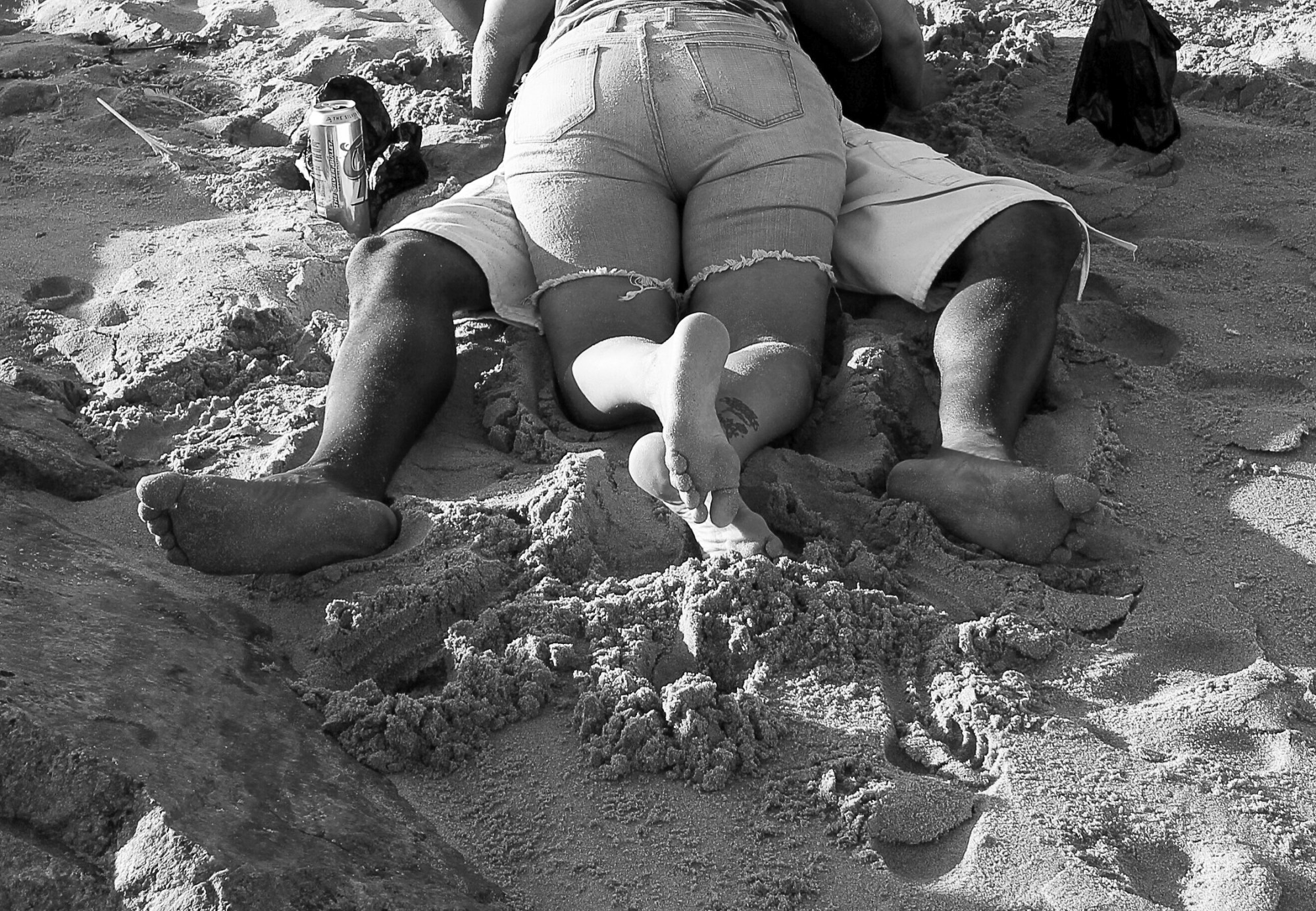
You can’t predict who you’ll encounter.
No, right. Certain sections of the beach are more friendly to certain types of community. There are parts where teenagers hang out, an LGBTQ+ region, a hipster part.
Are these explicit or implicit?
Kind of both? Like Jacob Riis, if you go to a certain part of the beach, there are LGBTQ+ or rainbow flags, so it’s very explicit. There’s actually a campaign right now to protect part of that beach. It’s welcoming if you’re an ally, but it’s very much a safe space. There’s a family-friendly part, and then one where everyone is between, like, 20-40 and topless. Then the Rockaways are a mix of locals, teenagers, surfers. There are these interesting pockets, but in all of these, you will find mixing. I would walk from one enclave to the other, trying to get the variety of what was going on that day. I would try to always hit all the different points.
Were you ritualizing when you’d go?
I tried to go to the beach as often as possible. It was a big part of the motivation of quitting my job and going freelance: to be able to go to the beach. I worked a 40-hour workweek, then Friday, Saturday and Sunday was dedicated to shooting constantly, especially once I really knew that I’d quit my job.
From June through August, I’d go there three to four times a week. They’re my “beach lovers” months. There’s a trickling end of May and September or October — there’re still warm days. Climate change though, so… I’d go weekends, but people go in the week too, and sometimes I prefer it, because it’s less crazy. People who live out there, they’ve just, like, gone out for a picnic.
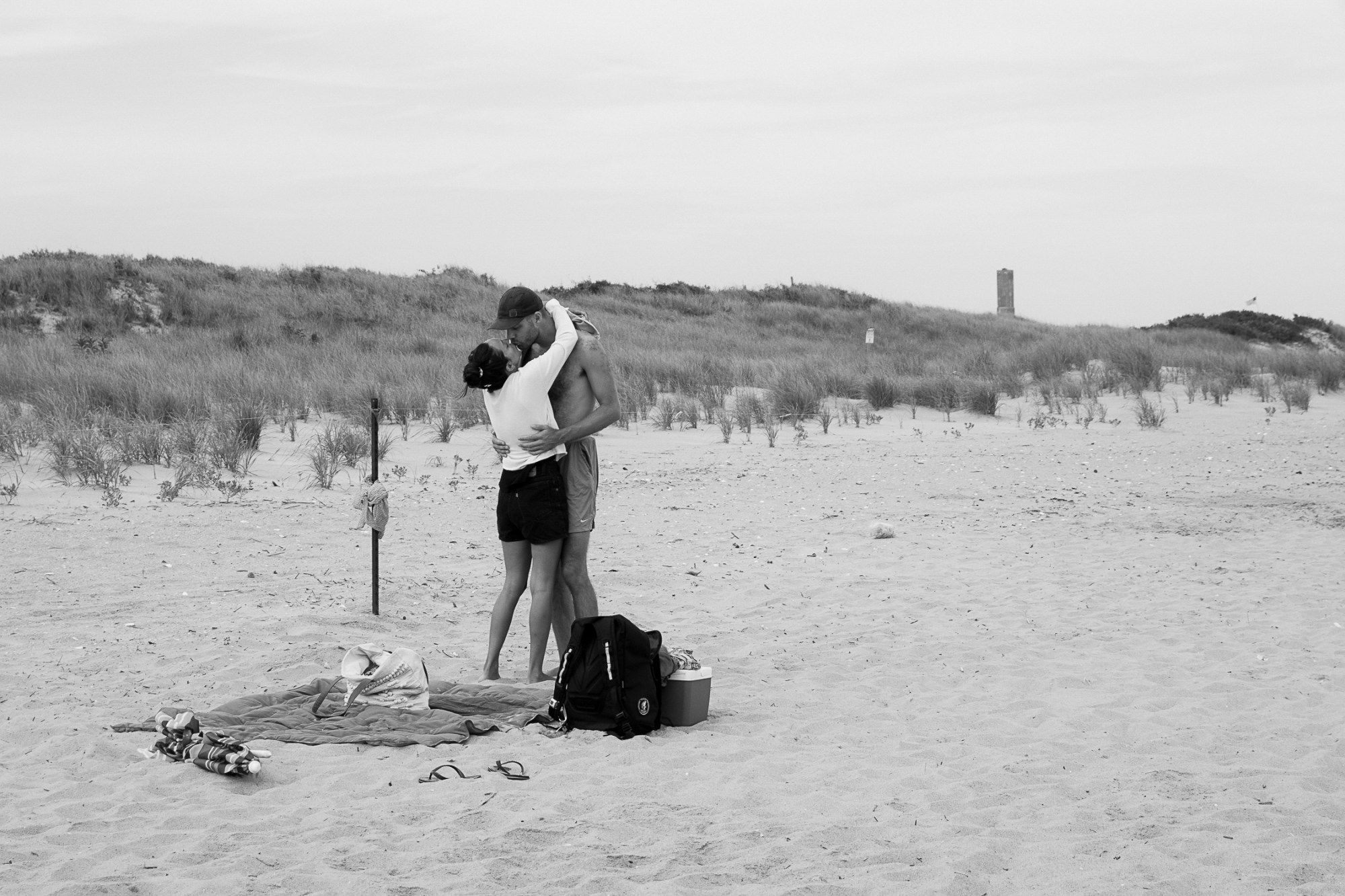
You’re from Montreal — it’s not like you hail from California! What is the gravitational pull towards this setting?
Yeah, I know. It’s funny. Honestly, leaving winter was one of the biggest motivations for leaving Canada. Like, I fucking hate the cold—I really don’t like winter. It was a dream come true to move to New York, and when I learned that there was a whole beach culture here — I was shocked by it. Oh, this exists next to this metropolis! On the days that the humidity is really unbearable, it’s always five to 10 degrees cooler at the beach. I’ve just always been a beach person. I have a lot of water in my chart.
Astrology explains everything.
[laughs] As a kid, summers in Canada were more about lakes and rivers, and then the occasional beach vacation. But there’s not many places in the world you can get on a subway and then go to the ocean. It’s just really cool: it’s $2.75 and you’re on the Atlantic coast. Yes, there’s trash there, and that can be gross, but it’s still a beautiful beach. I tried California, but it was just not my speed. I’m a city person, but I’m a beach person. New York is the perfect place.
‘Beach Lovers’ is available to purchase here.
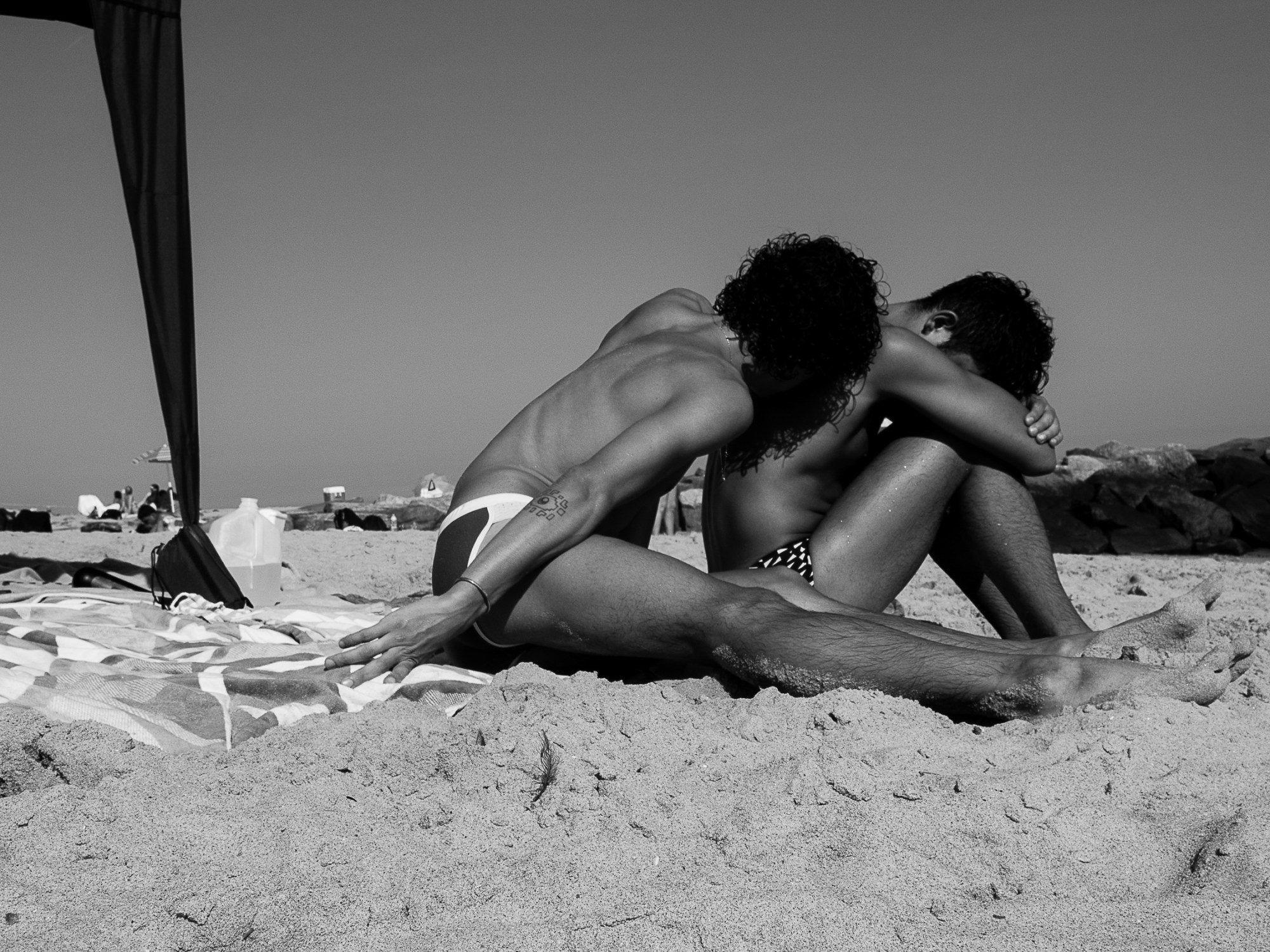
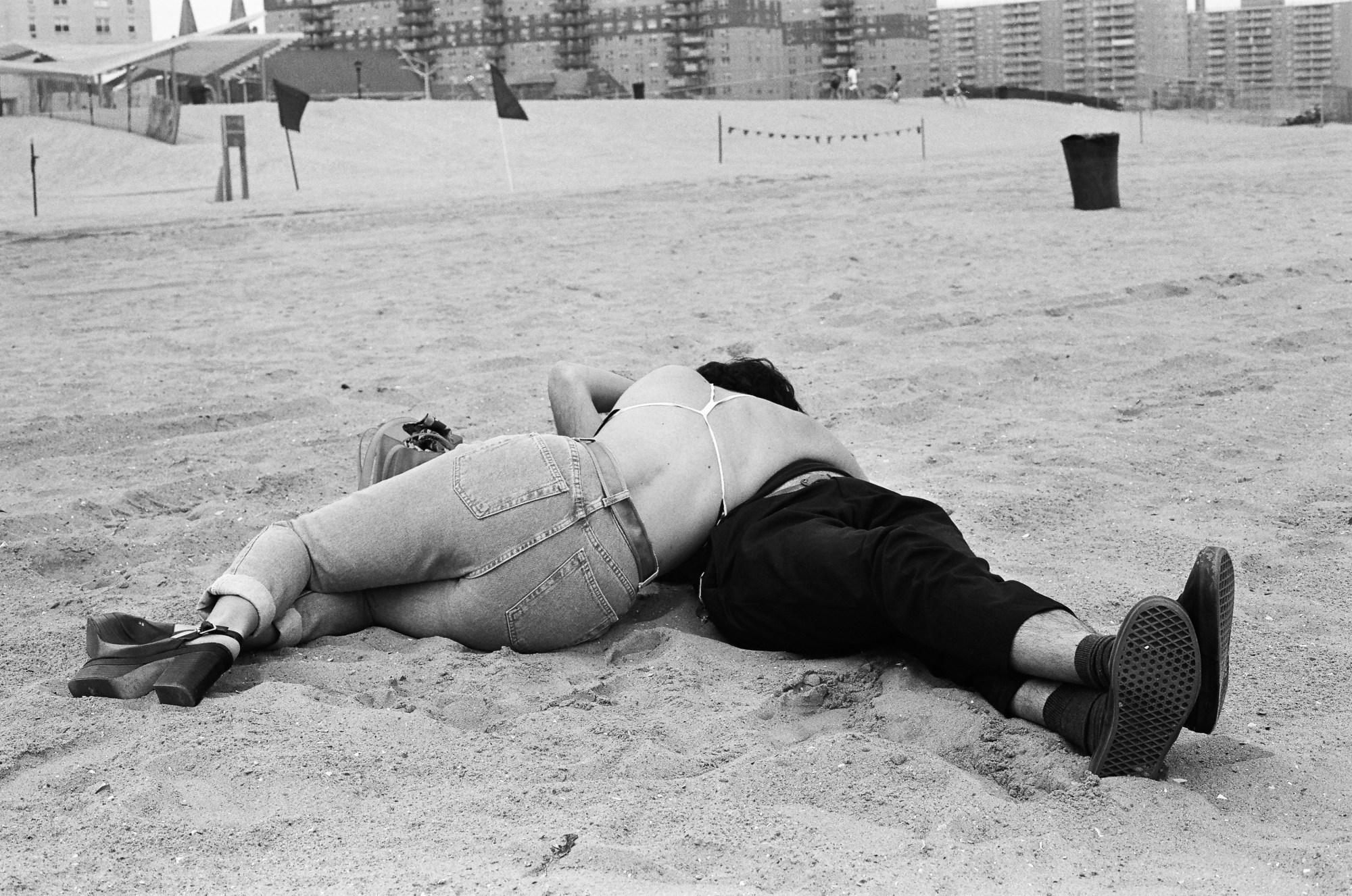
Credits
All images courtesy Erica Reade
